Being the political and financial heart of Indonesia, I've always associated Jakarta with business travel and hardly considered it a vacation destination. So when I received an invitation to expand my mind about the play factor in the Indonesian capital city, I accepted it with anticipation... and also a tingle of trepidation. What does this city with the highest population in Southeast Asia has to offer any seasoned urban explorer? Are the attractions worth the legwork? Is Jakarta tourist friendly?
 |
| After a 1.5 hours flight from Singapore, I landed at Jakarta's Soekarno-Hatta Airport an eager beaver to see the sights. |
MONAS (Monumen Nasional)
The best place to start exploring any destination is at its roots to understand from whence it came and possibly, to where it might head. Our acquaintance with Jakarta began at the city's historical and cultural epicenter marked by the stately MONAS (Monumen Nasional) monument.
Inspired by the grandeur of the Washington obelisk after a visit to the White House, President Sukarno commissioned the construction of MONAS in 1961 as a beacon to rouse Indonesia's evolution into a first-world economy. This explanation of how the MONAS came about was told to us by our local tour guide and it added another dimension to what Wikipedia purports (that the sculpture is a commemoration of the country's struggle for independence from Dutch rule). There's nothing like hearing the undercover story behind a national edifice from the people's perspective.
 |
| A juxtaposition of the new (MONAS) and the old (Garuda) icons of Indonesia. |
KOTA TUA (Jakarta Old Town)
Arguably, the center of Jakarta's modern history sprung from the Kota Tua district which was nicknamed the "Jewel of Asia" and the "Queen of the East" by 16th century sailors due to its strategic maritime location. Back in the old days, Kota Tua was considered the trade center for the Asian region which explains the many historic buildings, most that hail from the Dutch colonial era, still stand today as shadows of its glory days.
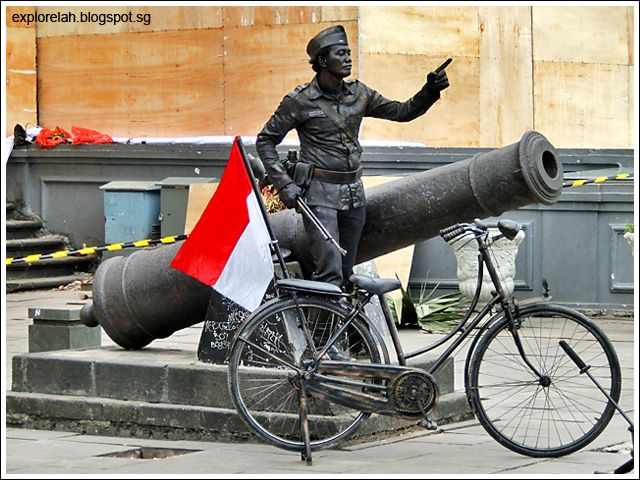 |
| Outside the museum were a couple of freeze artist and my favourite was this vintage war veteran posing by a canon. Simply brilliant! |
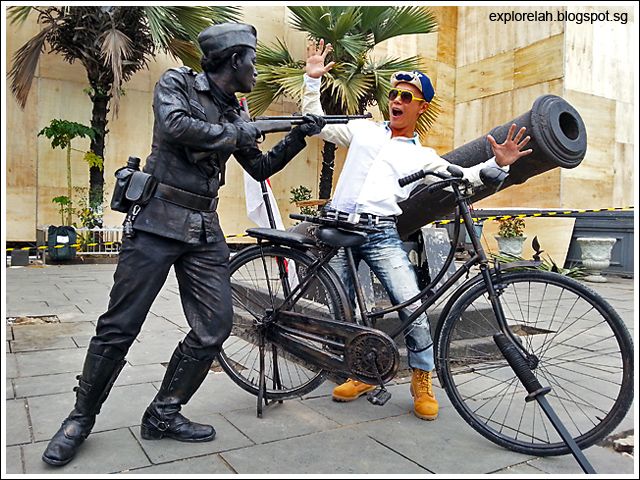 |
| Drop in some cash at his money box and you can get to pose for photos with him. There's no fixed amount so I gave him Rp20,000 (approx. S$2.10) |
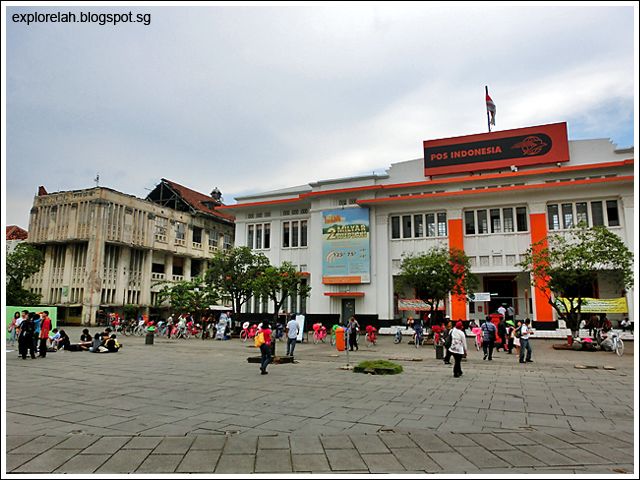 |
| Opposite the Fatahillah Museum is the old Post Office (Kantor Pos Kota). The refurbished Post Office contrasted sharply with the abandoned and decaying old warehouse to its side. |
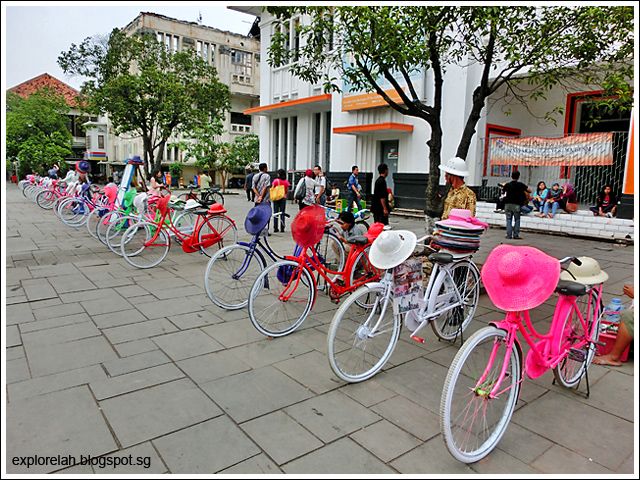 |
| What really caught our eyes at Kota Tua were the uber retro ontel (or onthel) bicycles pimped with psychedelic colours! |
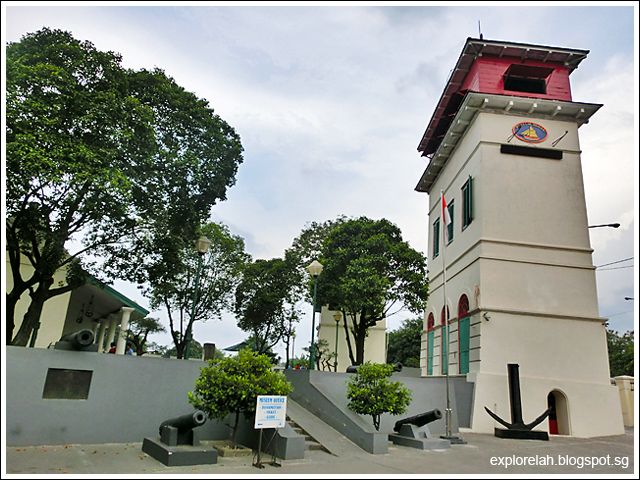 |
| Our third and last stop was the Menara Syahbandar (Syahbandar Port Tower), a former defense tower erected in 1645 and at 77 steps to the top, it was the tallest structure in the old days. |
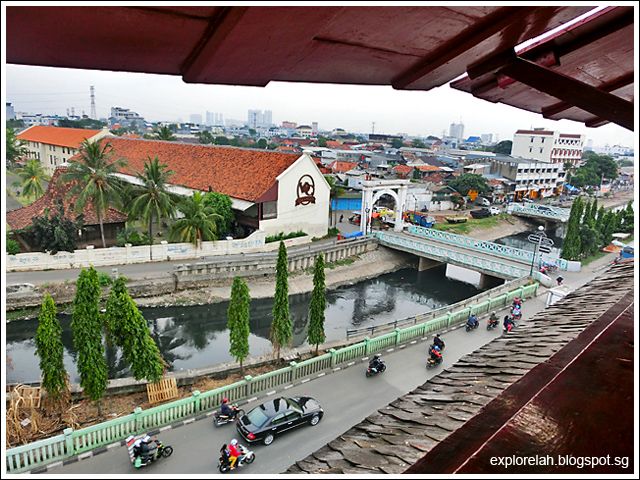 |
| The tower served as a watch for boats and ships plying the port and is today an excellent vantage point to get an eyeful of Jakarta's heritage district. |
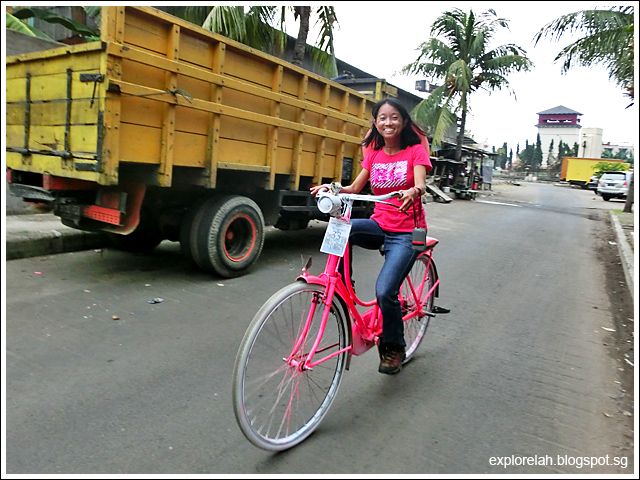 |
| Pink on pink... Siow Har was rode warrior for the day for battling the scary Jakarta traffic as we cycled to the various historic attractions. |
The most nerve-wrecking yet exciting part of history chugging at Old Jakarta was the ontel bike tour where we cycled alongside, and sometimes onto the clogged city streets with motorists obeying not just the traffic lights, but a wave of hand by cyclists to be given a safety of passage. If you would like to grow some balls, an ontel bicycle ride beyond Kota Tua would definitely fill the sacs!
RAGUSA
Address : Jalan Veteran I, No. 10 Jakarta Pusat (Central Jakarta) DKJI, Jakarta 10110
Tel : +6221-384-9123
Our journey to experience all things historic in Jakarta brought us to Ragusa Es Italia, a gastronomical relic that has been delighting the locals since 1932 with its homemade preservative-free ice-creams.
The café was opened by 2 Italian brothers (Luigi and Vicenzo Ragusa) and expanded with several outlets throughout Jakarta but the ice-cream chain melted under the heat of competition. Thankfully, the brand was survived by its original flagship shop at No. 10, Jalan Veteran I.
 |
| Walking into Ragusa was akin to time travel with yesteryear furnishings... |
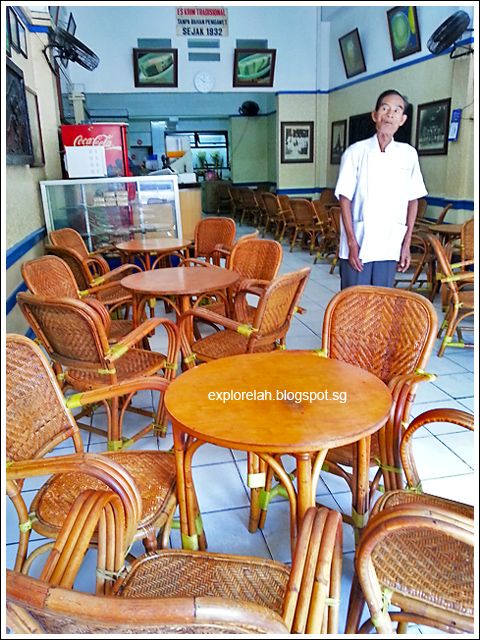 |
| ... and staff that is nostalgia on legs. |
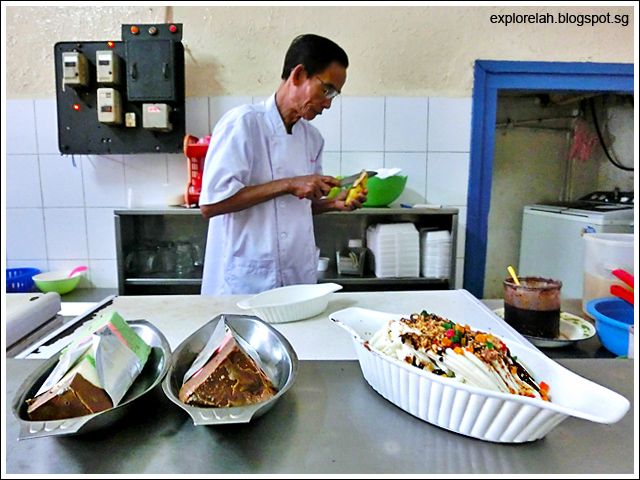 |
| A creamy serving of classics. |
 |
| We picked the following from the menu... Special Mix (Rp20,000), Cassata Siciliana (Rp25,000), Tutti Frutti (Rp25,000), and the very intriguing Spaghetti Ice Cream (Rp30,000). |
 |
| Apart from desserts to cool off, you can also order some Indonesian favourites such as Gado Gdao, Otak-Otak and Mie Juhi from street hawkers outside the shop. |
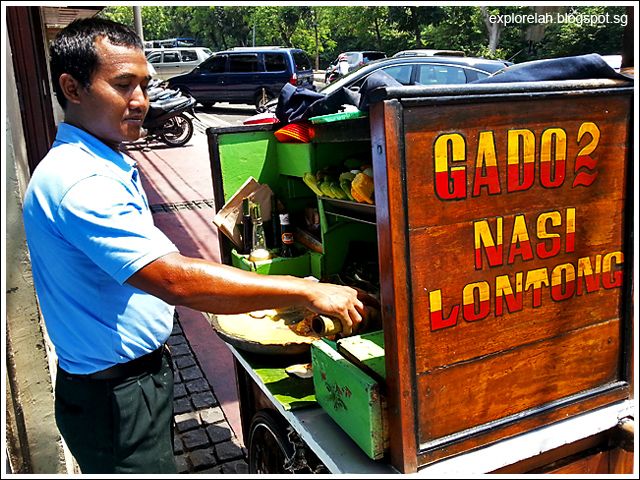 |
| The Gado Gado was excellent with sauce like thick, satisfying peanut butter. The street vendors seem to appear at the doorstep of Ragusa around noon so you may not see them if you go too early. |
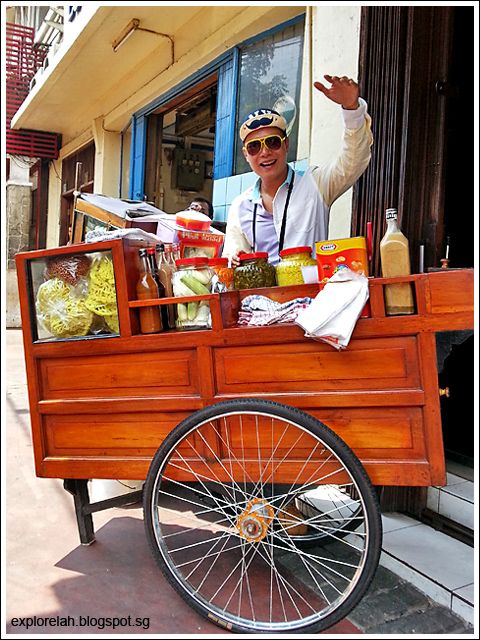 |
| Bringing forward a throwback, Ragusa and its street hawkers offer an authentic induction into the flavours of Old Jakarta. |
Address : Jalan Veteran I, No. 18-19, Jakarta Pusat (Central Jakarta), DKJI Jakarta 10110
Tel : +62 21 7060 2256
Located along the same street as Ragusa is Dapur Babah (Baba Kitchen), a Javanese-Peranakan restaurant that fuses Chinese and Indonesian cuisines in a homage to the cross-cultural union during the colonial era where early Chinese settlers married local Javanese women. I was surprised that Jakarta has a celebrated Baba-Nyonya culture since the Peranakans' genesis and proliferation seem to be contained within the Straits territories of British Malaya (chiefly in Penang, Melaka, and Singapore). My world has been expanded.
But although Dapur Babah is Peranakan, its menu is different from the staple of Nyonya food popularized in Melaka. We didn't find ayam pongteh, ayam buah keluak, or the asam dishes we are familiar with. Instead, we were introduced to a Peranakan culinary compass that pointed in all directions of the Indonesian archipelago with elements of Javanese, Sundanese and even Balinese flavours evident on our lunch table.
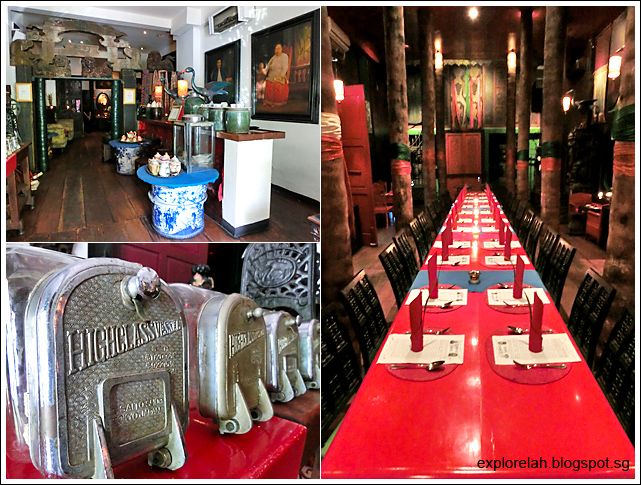 |
| Although Dapur Babah's entrance felt rather nondescript and untidy, the interior was an absolutely gorgeous visual feast! |
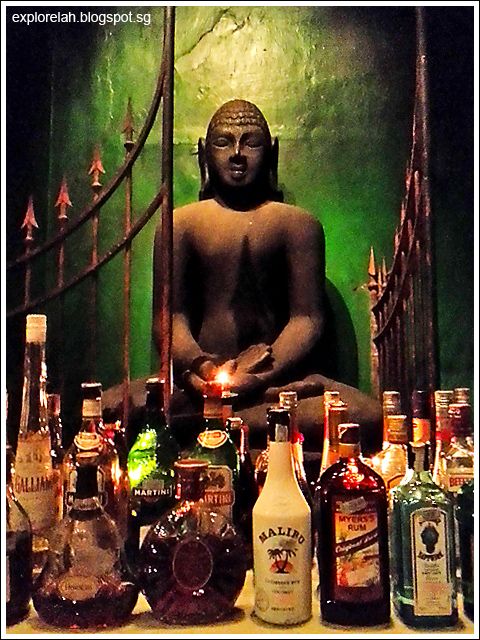 |
| The quickest way to nirvana is at the adjoining Tao Bar with Boozeddha! |
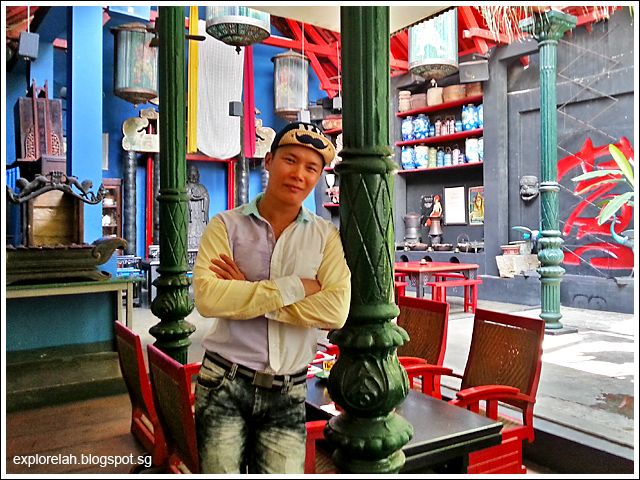 |
| My favourite venue at Dapur Babah was the semi open air terraced Babah Garden. |
 |
| One end of Babah Garden was filled with time windows that provided a glimpse of early Peranakan lifestyle of the Oei clan and other powerful Indo-Chinese families. |
Food-wise, quality and presentation were rated high but I can't quite distinguish traditional Indonesian palates from Indo-Peranakan cuisines. Maybe the Indonesian food I've been having all along in Singapore is already of the Indo-Peranakan lineage. Nonetheless, Dapur Babah is definitely worth the legwork while in Jakarta.
STREET FOOD
From retro Italian confects to groovy-glam Peranakan nomnoms, we next found our stomachs at a popular food street (Jalan Pecenongan) for that bona fide Indonesian dining experience.
The roadside was lined seam-to-seam with makeshift shelters and huge PVC banners and as simple as that, one 'restaurant' distinguishes itself from the next.
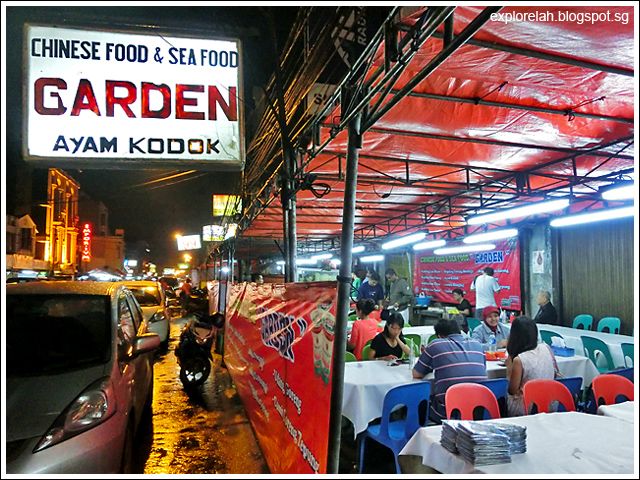 |
| We decided to try the Indonesian version of Chinese zi-char at this stall called Garden. |
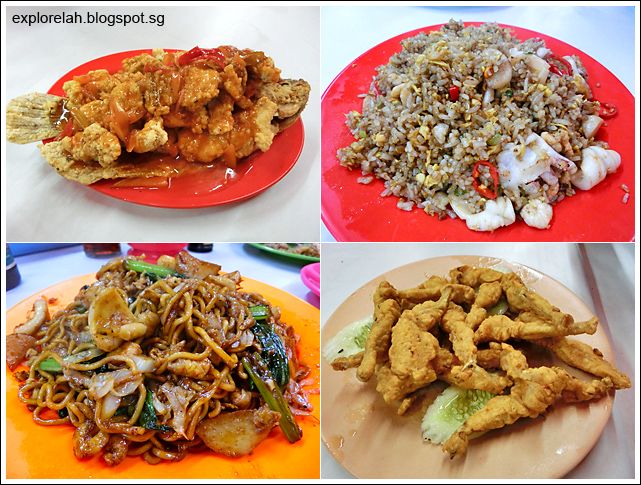 |
| We ordered sweet ad sour fish, seafood fried rice, fried noodles, deep-fried frog legs and stir-fried kailan. Prices weren't expensive and the dishes were palatable but suited to local taste. |
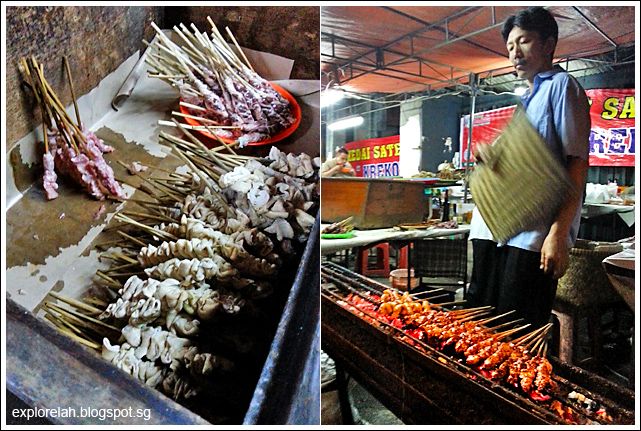 |
| As I was quite filled from dinner, I didn't try the pork satays. But my friends who had them told me that the meat was rather tough. |
After a very eventful day exploring the architectural heirlooms of the city and its gastronomies, we checked into Grand Mercure Jakarta Harmoni Hotel. The 5-star accommodation sits at a prime spot in the CBD area of Central Jakarta just minutes from MONAS and Old Jakarta (Kota Tua). Opposite the hotel is the Gajah Mada Shopping Mall so its location is really convenient.
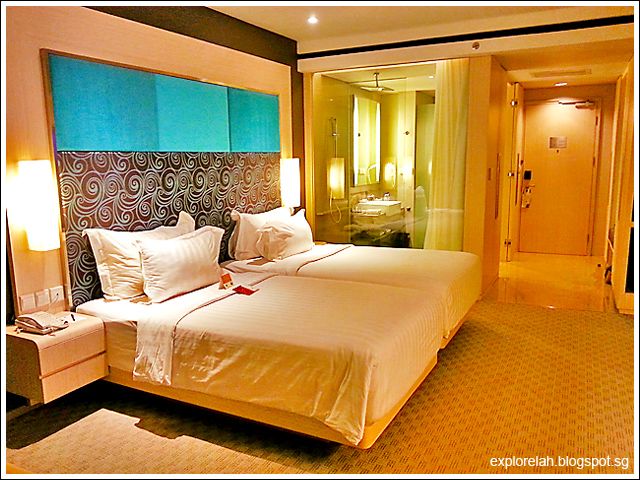 |
| Contemporary, modern and chic, our room was spacious and the beddings extremely comfortable. |
The traffic jams are patience-testing and the sights are not always well manicured, but there's a certain raw energy in the way the Jakartans try to make a living every way possible that invigorates me. Every streetside, every corner, there's bound to be someone selling something. It could be a pushcart offering food and drinks, a small stall retailing sundries, or souvenirs that have grown feet, their enterprising spirit got me to confront my procrastinations and excuses at doing some of the things I wanted to do. Others may find the constant stream of peddlers looking for a sale rather pesky, but I was moved by their being earnest.
As I shut down for the night, I can't help feeling that I've only seen the tip of the tip of the city's tourism iceberg. But as I learnt, appreciating Jakarta goes beyond seeing. The city has to be felt.
This post has been made possible by Jakarta Tourism Office (represented by Russell Cheong, Winsemius Consulting). For more vacation insights on Jakarta, visit http://jakartasavvy.com/
Walking around Jakarta made taller and more fearless with Timberland classic yellow boots.


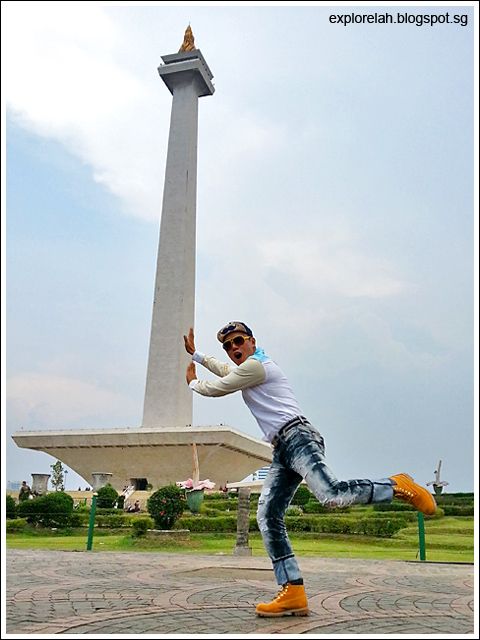
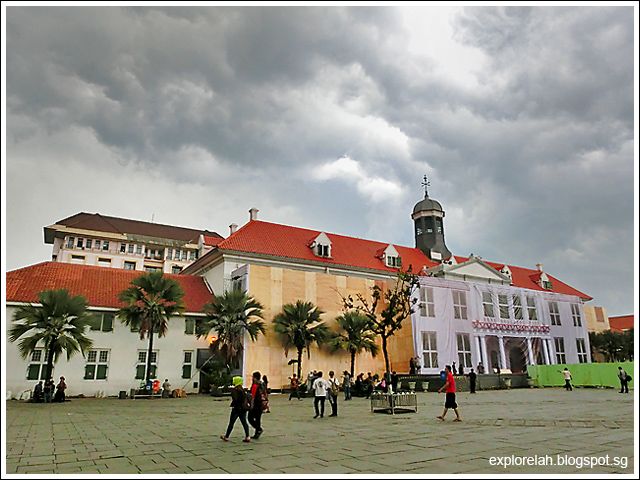
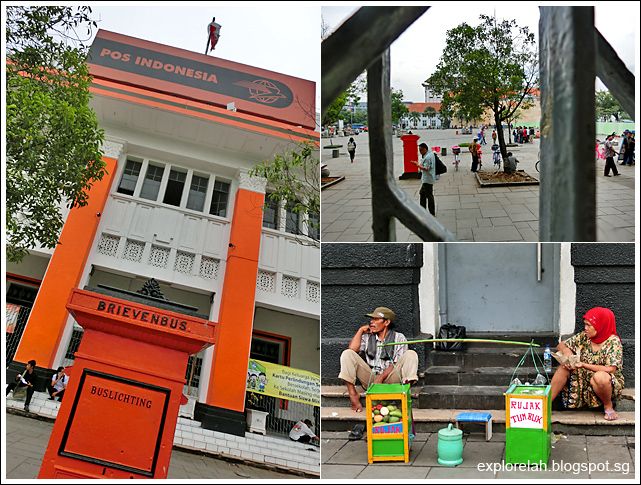
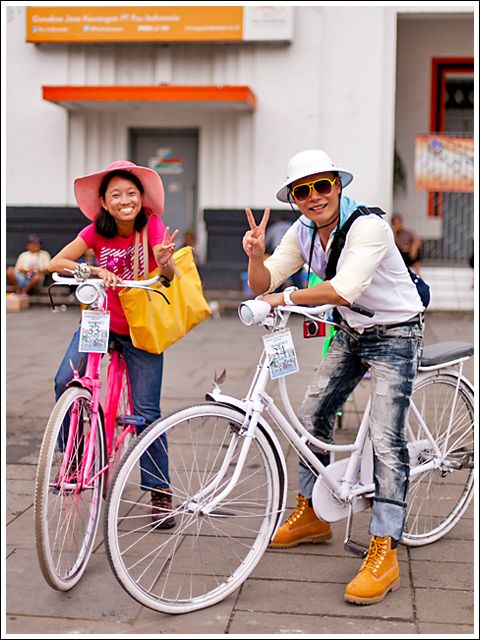

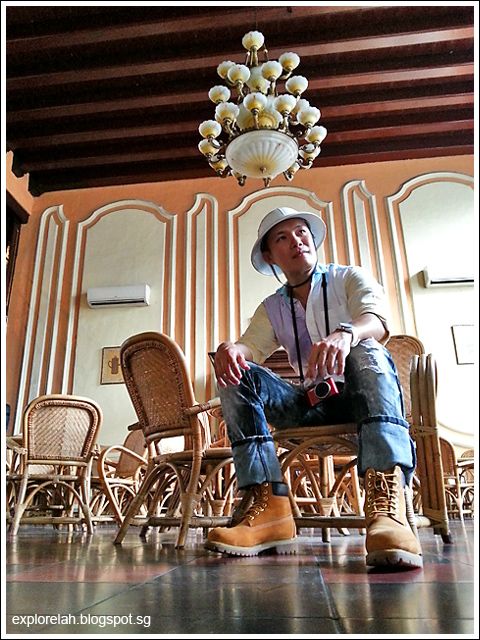

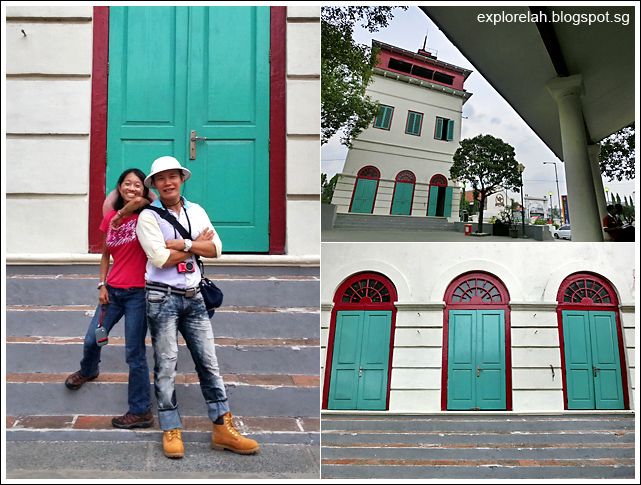
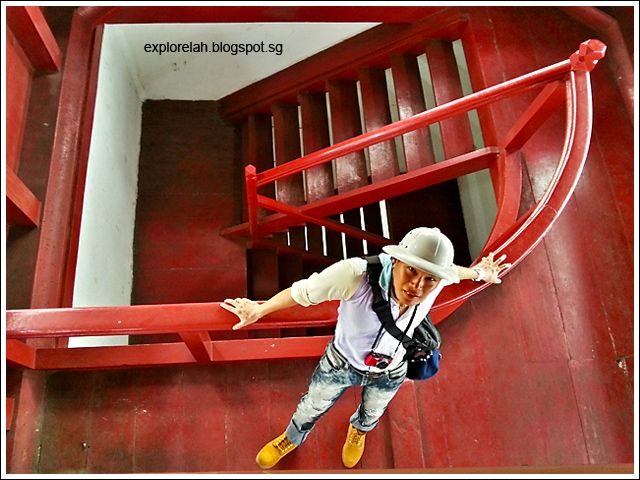
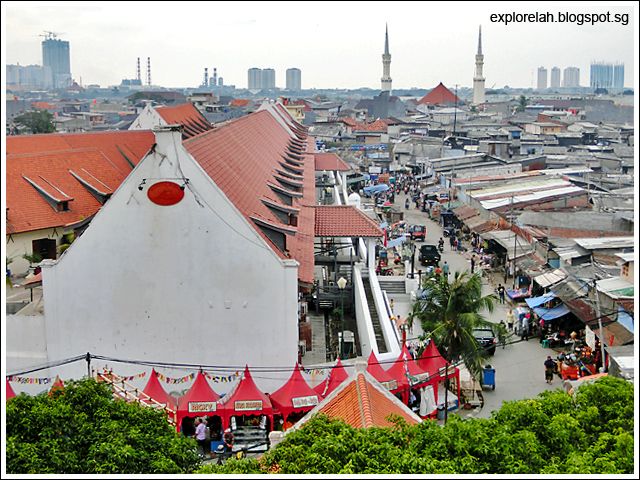


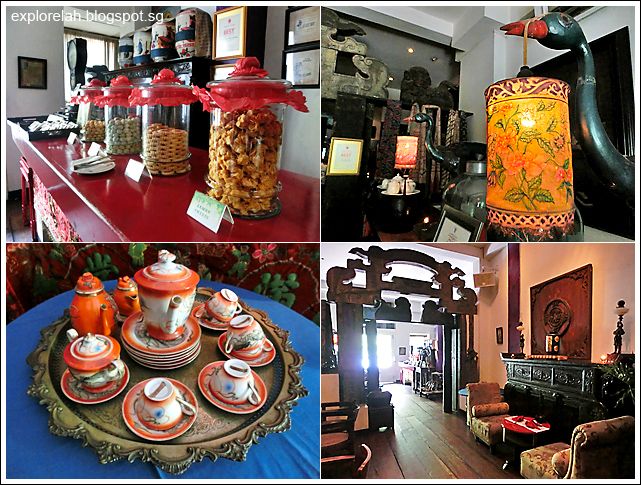
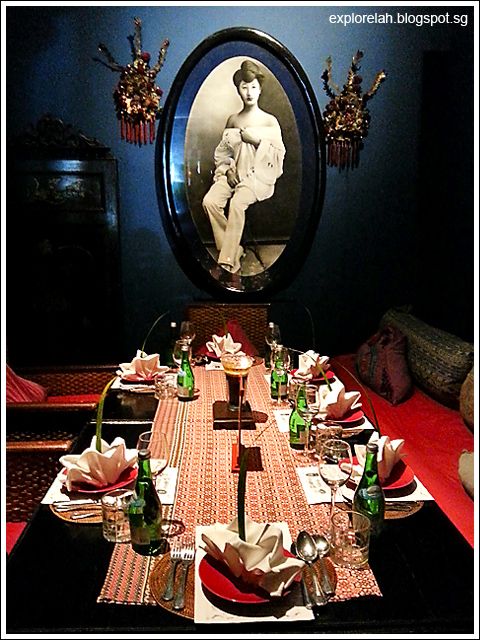
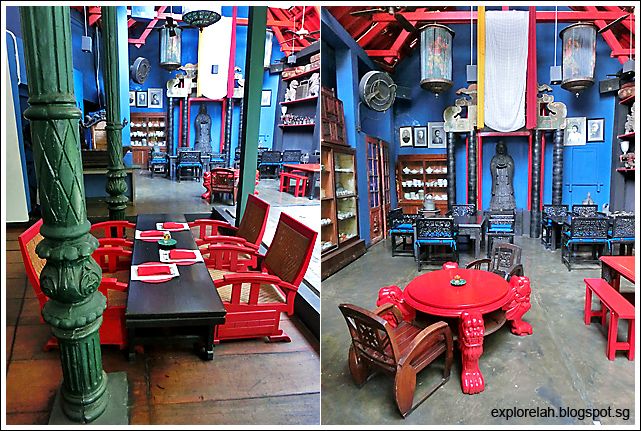

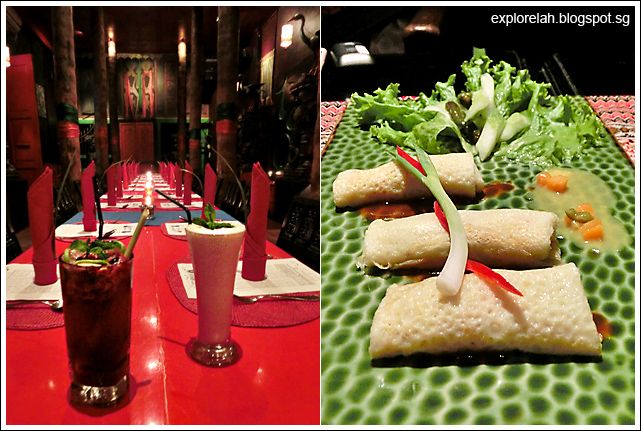
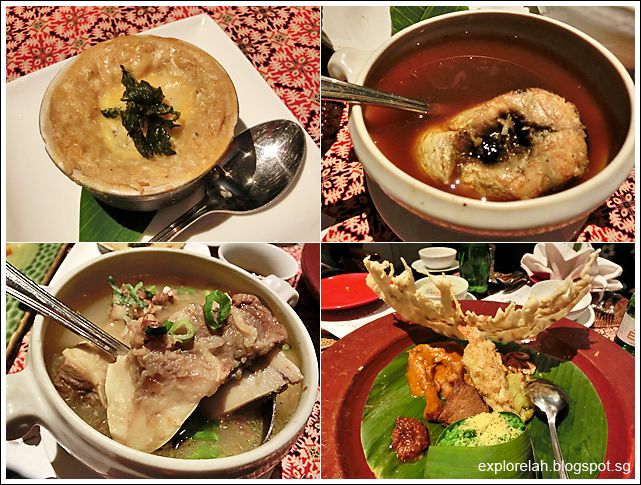
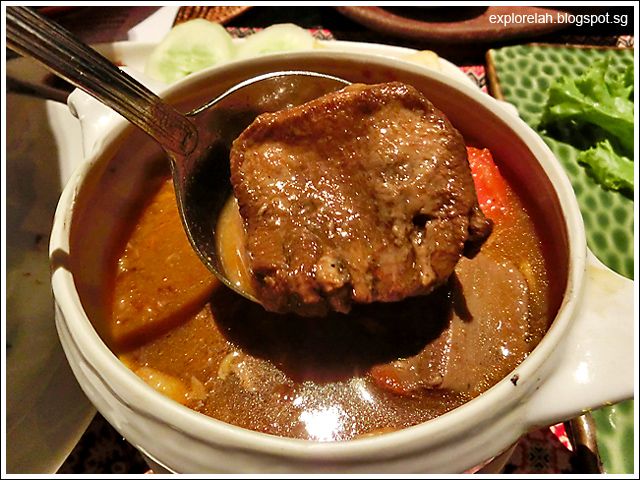
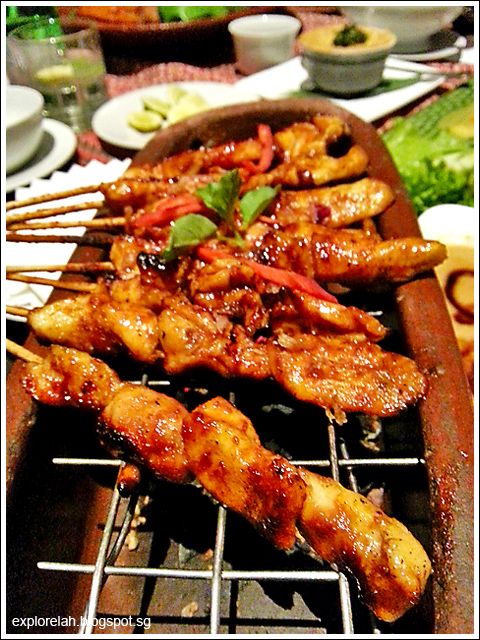
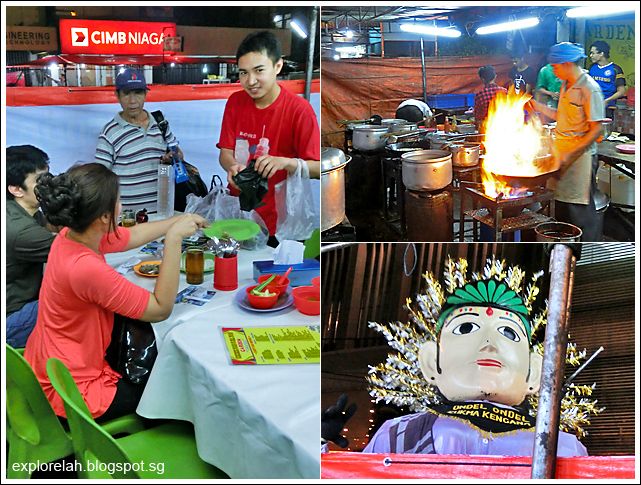

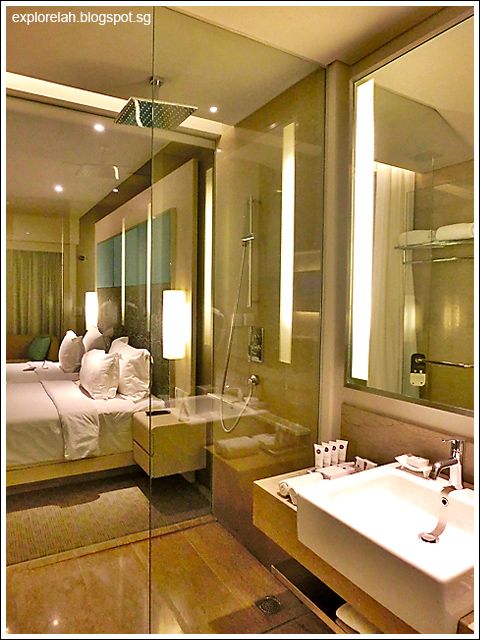
No comments:
Post a Comment